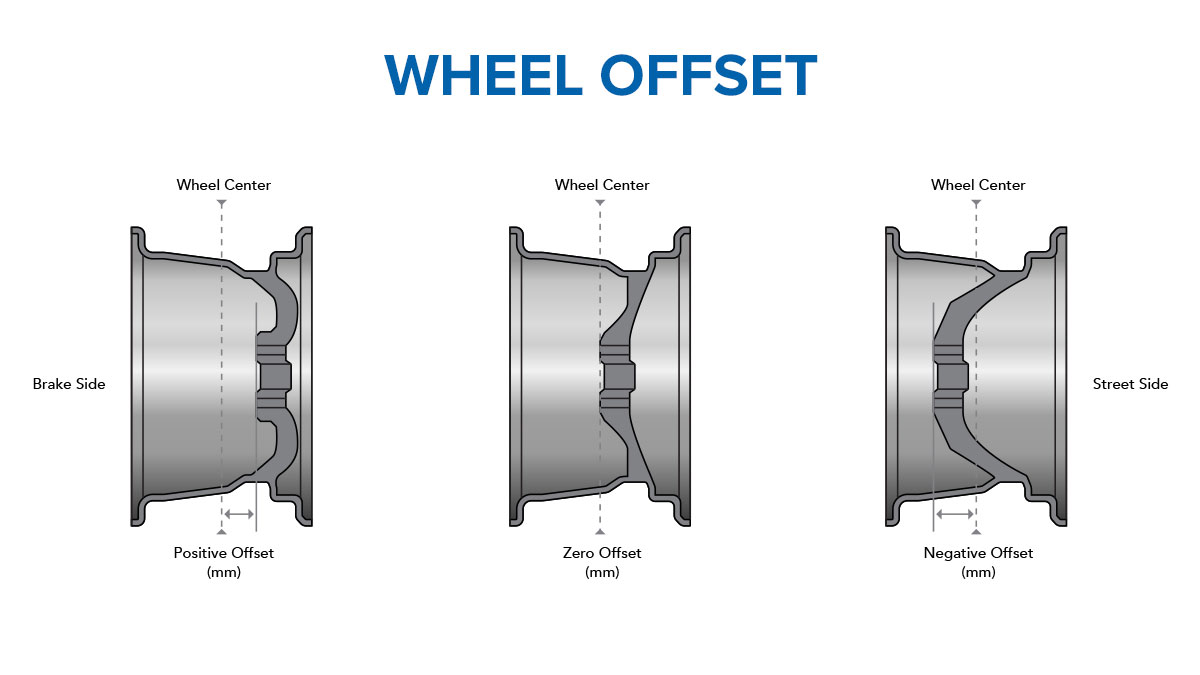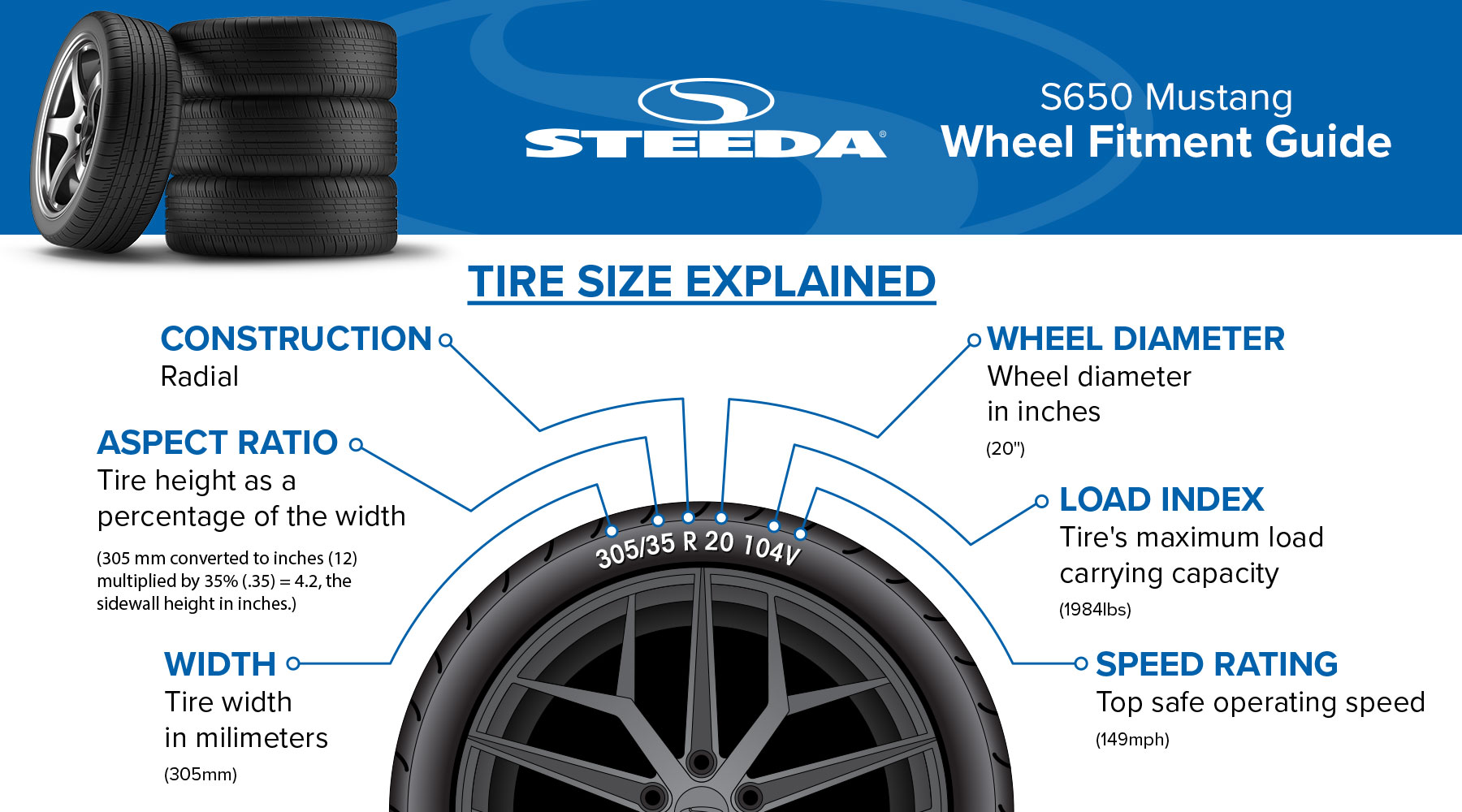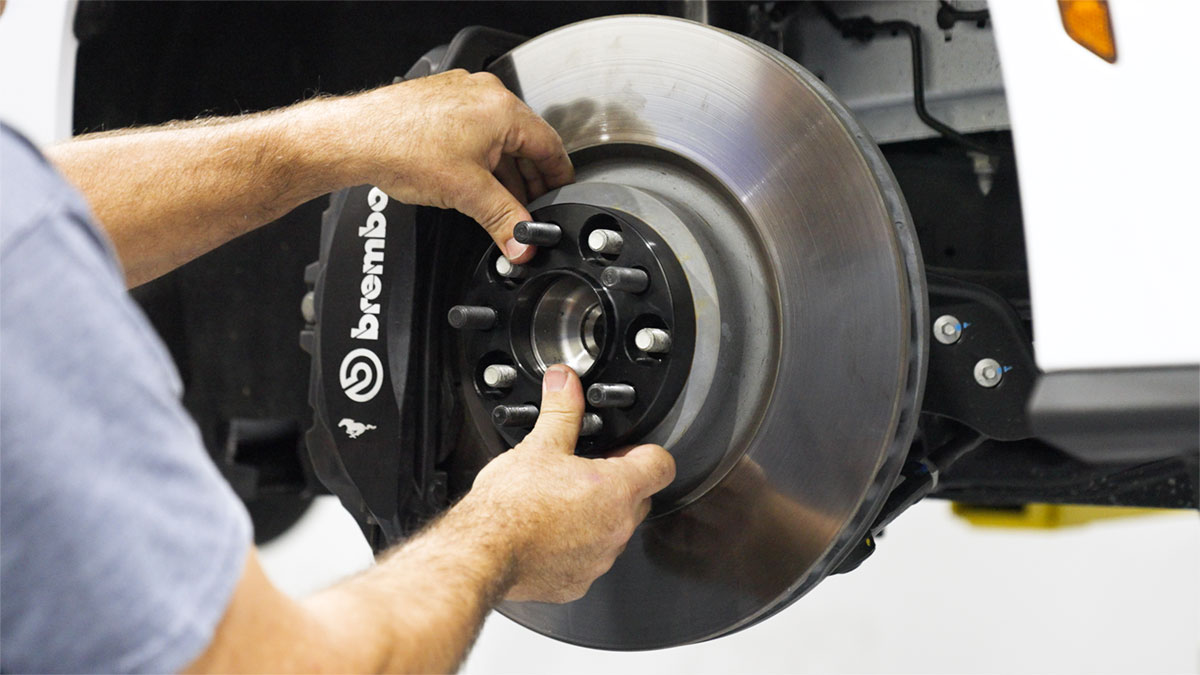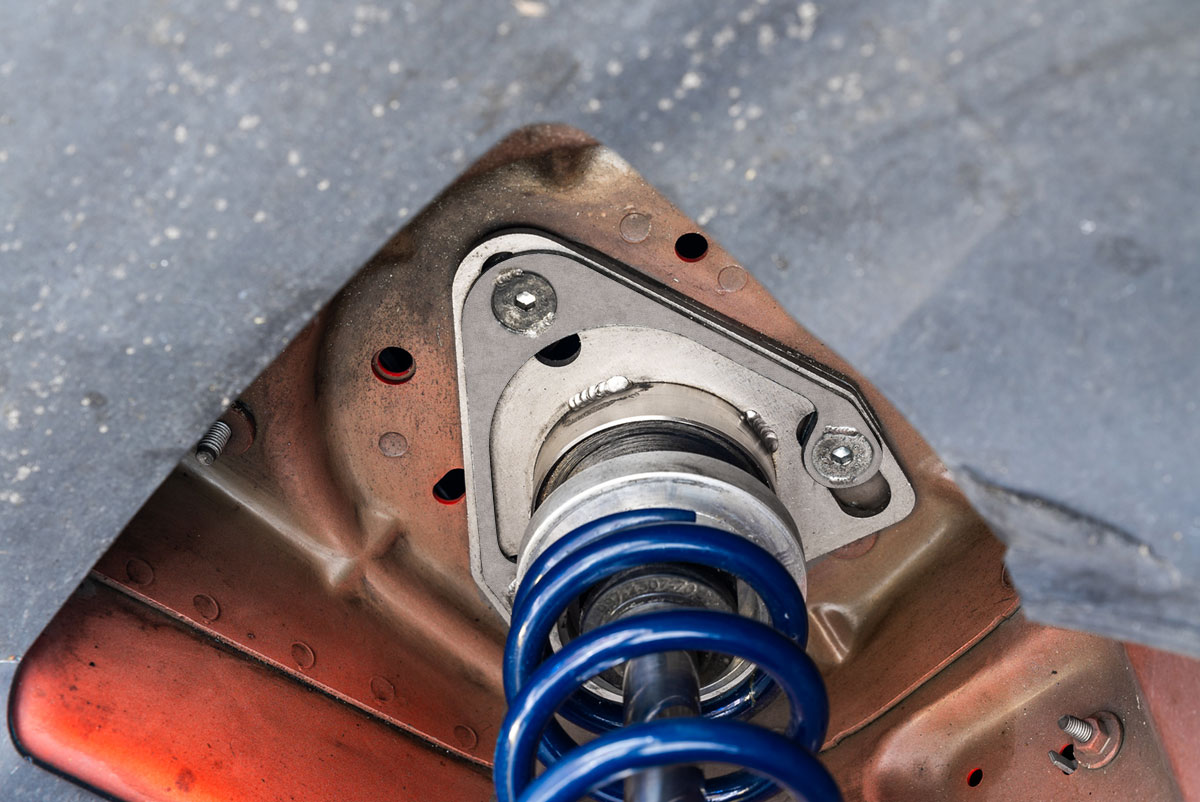Having the right wheel fitment and offset is crucial for several reasons:
Are you the proud owner of a sleek and powerful new S650 Mustang, or perhaps you're considering getting one? If so, you're likely aware of the thrill that comes with customizing and upgrading your prized automobile. Among the numerous considerations for enhancing your Mustang's performance and appearance, one crucial aspect often overlooked is wheel and tire fitment. In our observations, we've noticed that the S650, particularly when fitted with lowering springs, exhibits a more pronounced drop compared to its generational predecessor, the S550. This has led to our technical experts fielding numerous inquiries regarding potential rear wheel rubbing against the fenders. The right wheels and tires can make all the difference in how your Mustang handles, performs and looks on the road. From optimizing performance to achieving that perfect stance, understanding wheel and tire fitment for your S650 Mustang is paramount. Whether you're a seasoned enthusiast or a newcomer to the world of automotive customization, grasping the significance of proper fitment is essential for unlocking the full potential of your S650 Mustang. So, we have compiled some considerations to take into account when choosing the perfect wheel and tire combo for your 2024+ Mustang. To avoid rubbing problems and ensure proper wheel fitment, it's essential to choose wheels with the correct offset for your vehicle. This requires careful consideration of factors such as wheel width, tire size, suspension setup, and intended usage. However, altering the offset can have consequences beyond aesthetics. If the offset is too aggressive, meaning the wheels protrude too far outwards, it can lead to rubbing issues. Rubbing occurs when the tire comes into contact with the vehicle's body components, such as the quarter panels in the rear or the fenders in the front, especially during turns or over bumps. Drawing from our experience with the new platform, we advocate for a rear wheel offset ranging from 52 to 58 millimeters and a front wheel offset ranging from 32 to 39 millimeters for
vehicles equipped with 19x11 or 20x11 wheels. Deviating below this range often results in the wheels being positioned excessively outward, leading to potential issues with wheel rubbing. Tire size plays a crucial role in avoiding wheel rubbing because it directly affects the clearance between the tire and other components of the vehicle, such as the fenders and quarter panels. When the tire size is not properly matched to the wheel size and offset, there's a risk of the tires rubbing against these components. The width and diameter of the tire determine how much space it occupies within the wheel well. If the tire is too wide or has a larger diameter than what the vehicle's wheel well can accommodate, it can lead to rubbing against the fenders or quarter panels. Similarly, if the tire's sidewall is too tall, it may rub against the inner wheel well or suspension components. Also, the aspect ratio of the tire, which represents the height of the sidewall as a percentage of the tire's width, affects clearance. A lower aspect ratio means a shorter sidewall, which may reduce the space between the tire and the vehicle's body or suspension components, increasing the likelihood of rubbing. Choosing the appropriate tire size involves considering factors such as the vehicle's suspension setup, wheel size and offset intended use (street driving vs. track performance), and personal preferences. For staggered setups, we recommend running 275 or 285s in the front and 305 or 315s in the rear with no more than a 35% aspect ratio. For square setups, we recommend running 305s with no more than 35% aspect ratio. When the S550s were released, we introduced our subframe alignment kit to address the inconsistencies observed in subframe alignment during vehicle assembly. The alignment of the subframe plays a critical role in determining the positioning of the wheels within the wheel wells. Squaring up the subframe will allow more wheel and tire options for the S650. Wheel alignment is crucial for avoiding wheel rubbing because it directly impacts the positioning of the wheels relative to the vehicle's body and suspension components. When the wheels are out of alignment, they may tilt inward or outward or be positioned too far forward or backward. These misalignments can result in the tires not sitting correctly within the wheel wells. For example, excessive negative camber, where the top of the wheel tilts inward towards the vehicle, can cause the tire to lean into the wheel well, increasing the risk of rubbing against the fender, especially during cornering or over uneven road surfaces. On the other hand, positive camber, where the top of the wheel tilts outward, can also affect tire clearance and lead to rubbing. By ensuring proper wheel alignment, the tires maintain the correct orientation within the wheel wells, minimizing the likelihood of rubbing and preserving both tire longevity and vehicle performance. Regular alignment checks and adjustments are essential, especially after suspension modifications or when encountering symptoms of wheel rubbing. Wheel spacers provide an excellent cheaper alternative to correcting fitment issues than buying a new set of wheels and tires. For many people in the Mustang world, especially in recent years, fitting the widest stance possible to these cars has become immensely popular. People outfit their Mustangs, especially in the front of their vehicle, to move their stock wheels closer to the opening of the wheel well. Wheel spacers can help fit wheels to a car that otherwise would not clear the inside firewall or the front strut of the car by each wheel, as well as improve the stability of the car. For some enthusiasts, spacers are used to make a car's wheels sit flush with the body panels as opposed to the slightly pushed-in look many cars ride with from the factory. However, it is important to note that while wheel spacers can correct rubbing issues, they can also create rubbing issues if not properly used. Spring spacers can provide a cost-effective way of helping avoid wheel rubbing by altering the ride height of the vehicle and adjusting the suspension geometry. If you would like more information on wheel spacers please visit this article. Camber bolts are specialized bolts that are used to adjust the camber of the vehicle’s wheels. This adjustment allows for fine-tuning the position of the wheel within the wheel well, which can help prevent the wheel from rubbing against the fenders or other components. Camber Plates replace the stock upper strut mounts and provide a wider range of adjusting thus providing the vehicle’s owner more options when making camber adjustments. Both camber bolts and camber plates offer flexibility in adjusting the camber angle to suit specific driving preferences, accommodate aftermarket wheel and tire setups, and address clearance issues that may lead to wheel rubbing. By fine-tuning the camber angle, these components help ensure proper wheel alignment, reduce tire wear, and enhance overall handling and performance, while minimizing the risk of rubbing against surrounding vehicle components.
/
/
How to Prevent Wheel & Tire Rubbing On Your 2024 Mustang Guide

Overview
Introduction
Common Wheel Rubbing Solutions
Offset
Tire Sizes
Subframe and Wheel Alignment
Wheel Spacers and Spring Spacers
Camber Bolts and Camber Plates
Tire Calculator
Current Tire
New Tire
Old Tire
New Tire
Radius
Circumference
Diameter
Section Width
Sidewall
Revs/Mile





